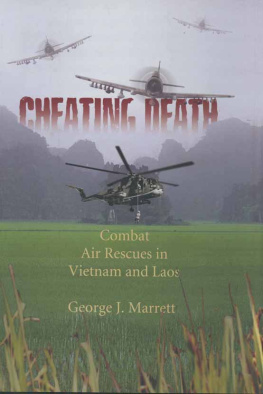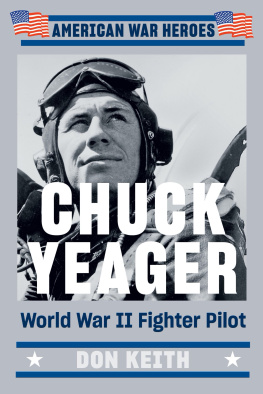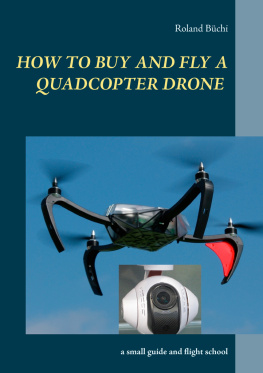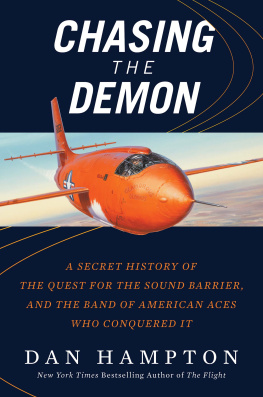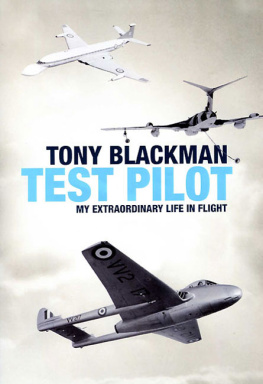


The latest edition of this work has been brought to publication with the generous assistance of Marguerite and Gerry Lenfest.
Naval Institute Press
291 Wood Road
Annapolis, MD 21402
2008 by George J. Marrett
All rights reserved. No part of this book may be reproduced or utilized in any form or by any means, electronic or mechanical, including photocopying and recording, or by any information storage and retrieval system, without permission in writing from the publisher.
First Naval Institute Press paperback edition published in 2014.
ISBN: 978-1-61251-426-0 (eBook)
The Library of Congress has cataloged the hard cover edition as follows:
Marrett, George J.
The golden age of jet flight testing at Edwards Air Force Base / George J. Marrett.
p. cm.
Includes bibliographical references and index.
1. Airplanes, MilitaryCaliforniaFlight testing. 2. Edwards Air Force Base (Calif.)History20th century. 3. AirplanesCaliforniaFlight testingHistory20th century. 4. AeronauticsResearchUnited StatesHistory20th century. 5. Aeronautics, MilitaryResearchUnited StatesHistory20th century. I. Title.
TL671.7.M33 2008
623.7460724dc22
2007045302

 Print editions meet the requirements of ANSI/NISO z39.48-1992 (Permanence of Paper).
Print editions meet the requirements of ANSI/NISO z39.48-1992 (Permanence of Paper).
22 21 20 19 18 17 16 15 14 9 8 7 6 5 4 3 2 1
First printing
To my wife, Jan, who for fifty years has been the wind beneath my wings
The skies
over the Mojave Desert
are the same as they were years ago,
blazingly hot summers and forbidding winds of winter
The contrails that marked the swift passage of these test pilots
toward death and destruction have been swept away
The memories of those days are now marked
by these words and so will forever be
engraved across
the sky
Contents
M y long career as a military pilot, from flying in combat in World War II and Vietnam to being in the business of flight testing for nine years, may qualify me to comment knowledgeably on George Marretts latest book.
George uses the golden age of jet flight testing as the theme that pervades the stories of test pilots he writes about. Indeed, it was a time when experimental aircraft were entering the age of supersonic flight. Speed and altitude records were waiting to be broken, and the men who fell in love with flying during their boyhoods were there to accept the challenges and to push the envelope.
He writes eloquently about these aviators, bringing them to life with descriptions of them, their families, their motivations, and the drive that made them ready, willing, and able to voluntarily be among those who challenged the unknown. These men received both rewards for achieving success and the personal satisfaction of contributing to the utility and flying characteristics of the aircrafts they were testing. They knew that the primary role of the test pilot was not only self-satisfaction in a job well done but the enormous responsibility of ensuring that the best possible aircraft were delivered to the men and women who would fly those aircraft into combat in defense of our country.
One side of the coin was golden, but the other side was tarnished by the frequent accidents that cost the lives of test pilots. They were Marretts friends and colleagues, and they were my friends too, since I had served at the Flight Test Center at Edwards Air Force Base in California in the years just before his service there.
George goes into great detail in describing the cause of each accident, whether it was the need for a split-second response by the pilot or a mechanical malfunction. He does this with respect and dignity for the pilot who lost his life doing what he loved, working hard to make sure his aircraft would be the best possible machine it could be.
On a lighter side, we fighter pilots, destined to test advanced aircraft that would introduce us to high G-force stress for extended periods, were required to undergo more than routine physical exams. Some of the testing was a bit embarrassing. Think: urine, how long can I hold it? George injects a bit of fighter pilot humor at just the right times. I laughed as his vivid accounts brought some of those occasions in my own life back to me.
When I read this book, as well as the others George has written, I felt that I was listening to a historian. When discussing an aircraft, he provides precise data on the aircraft performance, including speed, altitude, and range. He continues with exact information on the kinds of weapons it could carry and other features or qualities of that specific aircraft. I like that because, whether youre a pilot or an aviation enthusiast, I believe the minds eye can better perceive a particular story as it unfolds if you know more about the aircraft.
I suspect George will be pleased when I say that I completely agree with his assessment of the F-111A and the F-4. He did not like either one. The F-111A was a mistake promulgated by Secretary of Defense Robert McNamara. It was to be the single aircraft for both the U.S. Navy and the U.S. Air Force. That was a monumental blunder. I flew the F-111A only once, but it turned out to be a dismal failure for the mission it was designed to accomplish. George details it well. I flew all the new Century Series fighters from the F-100 through the F-107 and flew the F-105 in combat in Vietnam. Years later I returned to Edwards Air Force Base as its commander and had a chance to check out the F-4. On my first flight, after a few routine maneuvers, I tried a dive-bombing run. On the pullout from the dive, the G-forces continued to increase and I had to push forward on the control stick to prevent an increase that could lead to a high-speed stall or loss of control. I flew the aircraft several times after that, but soon decided not to fly it anymore. The F-4 required special care or it could kill you. In combat, special care should be the last thing on the fighter pilots mind. George draws some interesting conclusions after he performed an intensive test program on the F-4 to investigate some of its undesirable handling characteristics. They make for interesting reading.
The golden age of flight testing did come to an end. Rockets into space, earth orbits, and trips to the moon spelled their doom. The technological age assaulted us as analog electronics turned into digital and product reliability improved dramatically. Thanks in part to the computer age and sophisticated flight simulators, flight testing continues with far less loss of life than in years past. After he left the Air Force, George himself made a significant contribution to the golden age as a test pilot for the Hughes Aircraft Companyone of the great companies that contributed tremendously to the technical improvement of both civil and military aviation.
Next page

